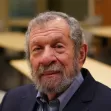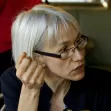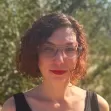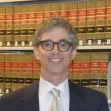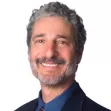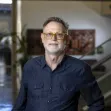The Daily Source of Urban Planning News
Why we Need to Pay $4 for a Gallon of Gasoline
Hurricane Katrina showed how vulnerable the United States is to oil shocks. Government needs to do more to encourage conservation.
Designing A New New Orleans
Architects and urban planners start thinking about designing the form of a rebuilt New Orleans.
'Marshall Plan' Urged For Gulf Coast Region
Republican leaders propose the development of a comprehensive and ambitious 'Marshall Plan' for hurricane-ravaged Gulf Coast region.
Sunny Days For Green Power
The clean-energy sector is experiencing a post-Katrina bounce.
Was The Biblical Cain The World's First Urban Planner?
In 'Fallen', David Maine's latest novel, he espouses the idea that Cain invented streets and marketplaces before murdering his brother.
World Faces Housing Crisis
A new report by the United Nations Human Settlements Programme warns that unless governments around the world take action the world faces a massive urban crisis as housing shortages could lead to mega-slums.
Katrina As An Extension of the US Environmental Justice Problem
What's behind the socio-economic disparity in environmental planning -- and emergency response to environmental disasters? Slow Katrina evacuation fits pattern of injustice during crises.
Everglades Restoration A Group Effort
The group spearheading the Everglades restoration is seeking input from a variety of sources.
San Diego Awards $19 Million in 'Smart-Growth Incentives'
San Diego's regional government awards $19 million to 14 'smart growth' projects in an innovative smart growth incentive program.
Simulation Predicted Katrina Damage
A federally sponsored project had simulated the toll a Category 3 hurricane would have on New Orleans well before Katrina hit.
Managing The Largest Environmental Project In The World
Restoring Florida's Everglades is the largest environmental project in the world. The team is using an innovative technology to manage public interaction.
My Choice For A Post-Katrina Federal 'Super Manager'
Columnist Neal Peirce recommends an individual who, as a federal "super manager," has the ability to forge new understandings in Louisiana while being sensitive to social and racial issues.
What Californa's 1994 Earthquake Can Teach New Orleans
The former governor of California offers advice about rebuilding to politicians in New Orleans, based on his experience with Los Angeles' 1994 earthquake.
HUD Role In Katrina Relief
The Poverty and Race Research Action Council uses relief efforts for the 1994 Los Angeles earthquake as a model for HUD action along the Gulf Coast.
What's Really Under Water
Major data providers are compiling lists of deals connected to properties in the 90,000 square miles ravaged by Katrina.
HOPE VI & Mixed-Finance Redevelopment
Report finds that HOPE VI funds can attract new investment into places where the market was previously absent, creating more viable economically-integrated neighborhoods with access to jobs and services.
Nagakin Capsule Tower 'Pod Living' A Failure
One of Tokyo's most famous examples of 'pod living' is on the chopping block for demolition.
Salvaging History After Katrina
Hurricane Katrina devastated historic districts, properties listed on the National Register of Historic Places, and numerous other historicall important buildings.
National Measure For E-Waste?
Electronics companies urge Congress to adopt a uniform policy on electronic waste and recycling.
Living On The Coast...Dangerously
American love to live on the coast and they won't let nature stop them.
Pagination
Yukon Government
Caltrans
New Jersey Institute of Technology
Mpact (founded as Rail~Volution)
City of Camden Redevelopment Agency
City of Norman, Oklahoma
City of Portland
City of Laramie
Urban Design for Planners 1: Software Tools
This six-course series explores essential urban design concepts using open source software and equips planners with the tools they need to participate fully in the urban design process.
Planning for Universal Design
Learn the tools for implementing Universal Design in planning regulations.


























